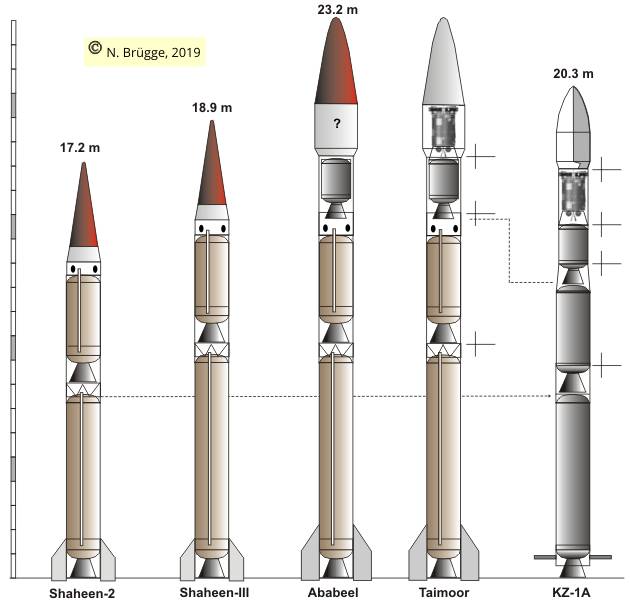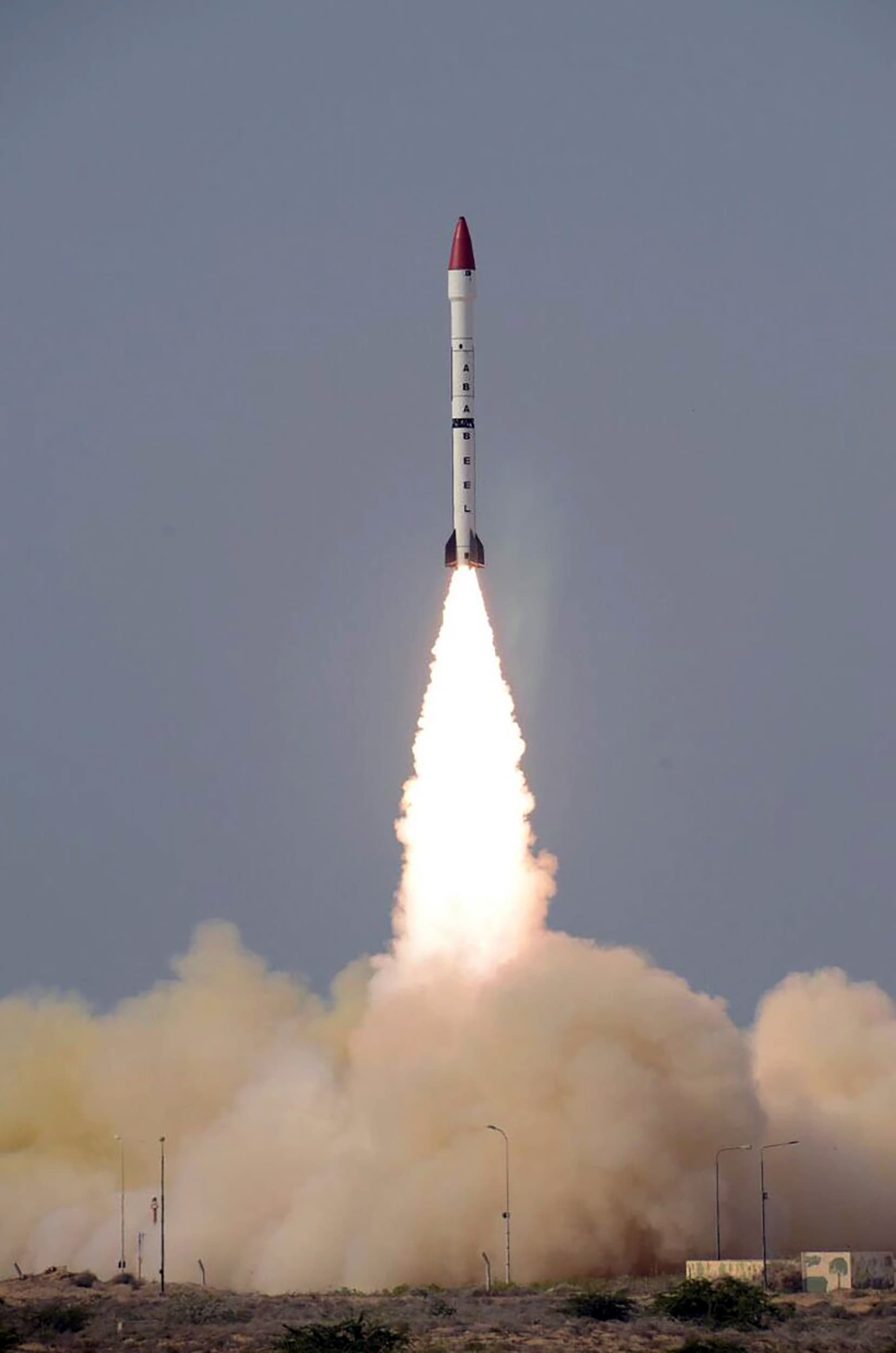Soheil_Esy
Fazanavard فضانورد
- Joined
- Apr 5, 2015
- Messages
- 744
- Reaction score
- 19
- Points
- 18
For the North Korean space program, see The North Korean Space Program Thread.
For the Iranian space program, see The Iranian Space Program Thread.
© A S☫heil presentation; First published 2017; Updated 2017-2017
Table of Contents
Inter-Indian-Subcontinental Space Race
Pakistani-Indian Space Race Outcome
Space Milestone
|
Date
|
Name
|
Agency
First space agency|1961|SUPARCO|SUPARCO
First space center|1962|Sonmiani Rocket Range, Karachi coast|SUPARCO
First sounding rocket|07 June 1962 at 1953 hours|Rehbar I|SUPARCO
First satellite|April 19, 1975|Aryabhatta-I|ISRO
First launch vehicle|July 18, 1980|SLV-3|ISRO
First GEO satellite|Jun 19, 1981|APPLE|ISRO
First astronaut|Monday, April 2, 1984|Rakesh Sharma |ISRO
First deep space probe| October 22, 2008|Chandrayaan-1|ISRO
First manned launcher|||
http://www.isro.gov.in/about-isro/isros-timeline-1960s-to-today#16
Pakistani Space Milestones
Space Milestone
|
Date
|
Name
|
Remark
First space agency|1961|SUPARCO|
First space center|1962|Sonmiani Rocket Range, Karachi coast|
First sounding rocket|07 June 1962 at 1953 hours|Rehbar I|
First satellite|16 July 1990|Badr I|launched on LM-2E
First GEO satellite|31 January 1996|Paksat-1|Palapa C1 leased to the SUPARCO as PakSat
First astronaut|||
First launch vehicle|||
First deep space probe|||
First manned launcher|||
Pakistan's Space and Upper Atmosphere Research Commission (Suparco)


Pakistan's sounding rocket
Pakistan's space launcher
Taimur SLV
Video
For the Iranian space program, see The Iranian Space Program Thread.
© A S☫heil presentation; First published 2017; Updated 2017-2017
Table of Contents
1. Table of Contents
2.1. Inter-Indian-Subcontinental Space Race Updated 16 APR 2017
2.1.2. Pakistani-Indian Space Race Outcome
2.1.3. History of Pakistani Space Milestones
3. Pakistan's Space and Upper Atmosphere Research Commission (Suparco)
4. Pakistan's sounding rockets
5. Pakistan's space launchers
6. Pakistan's Satellites
6.1. BADR-1
6.2. BADR-B
6.3. Paksat-1
6.4. Remote sensing satellite
7. Pakistan's manned space program
7.1. Pakistani-Chinese space cooperation
Inter-Indian-Subcontinental Space Race
Feb 16, 2017
Pakistan began space programme 8 years before India
http://www.hindustantimes.com/india...axies-ahead/story-uZW0NQG5Qmxa1o2QM8M8SL.html
First space agency|1961|SUPARCO|SUPARCO
First space center|1962|Sonmiani Rocket Range, Karachi coast|SUPARCO
First sounding rocket|07 June 1962 at 1953 hours|Rehbar I|SUPARCO
First satellite|April 19, 1975|Aryabhatta-I|ISRO
First launch vehicle|July 18, 1980|SLV-3|ISRO
First GEO satellite|Jun 19, 1981|APPLE|ISRO
First astronaut|Monday, April 2, 1984|Rakesh Sharma |ISRO
First deep space probe| October 22, 2008|Chandrayaan-1|ISRO
First manned launcher|||
First space agency|1961|SUPARCO|
First space center|1962|Sonmiani Rocket Range, Karachi coast|
First sounding rocket|07 June 1962 at 1953 hours|Rehbar I|
First satellite|16 July 1990|Badr I|launched on LM-2E
First GEO satellite|31 January 1996|Paksat-1|Palapa C1 leased to the SUPARCO as PakSat
First astronaut|||
First launch vehicle|||
First deep space probe|||
First manned launcher|||
Pakistan's Space and Upper Atmosphere Research Commission (Suparco)


Feb 16, 2017
The year is 1961. A new president John F Kennedy has just taken oath in the United States, the Soviet Union has put the first man in space
But something equally momentous is happening in Pakistan, where globally renowned physicist Abdus Salam is convincing president Ayub Khan to set up a national space agency, the first in the subcontinent. In September that year, Salam sets up the Space and Upper Atmosphere Research Commission (Suparco) headquartered in Karachi – a full eight years before neighbour India formalises its own space agency.
The initial years of the agency are buoyed by hope. Four top scientists are sent to the Nasa to study space technology and Salam’s growing stature in the scientific world – he would win the Physics Nobel Prize in 1979 – help attract talent to the nascent organisation.
...
The agency is now pinning its hopes on a Mission 2040 – by when it aims to have indigenous satellite making and launching capabilities
http://www.hindustantimes.com/india...axies-ahead/story-uZW0NQG5Qmxa1o2QM8M8SL.html
Pakistan's sounding rocket
2014-06-23
In 1962, Suparco launches its first rocket, Rehbar I, from a range off the Karachi coast with help from Nasa, a year before India’s first rocket would blast off from the Thumba launching station.
Pakistan becomes the fourth Asian country to launch rockets after China (DF-1: Dongfang-1, 东方-1号, 100 km , 8 September 1958) Japan (K-6, 60 km altitude, June 1958) and Israel (Shavit II, 52 miles altitude, 6 July 1961).
http://www.isas.jaxa.jp/e/japan_s_history/detail/kappa.shtml
http://www.jta.org/1961/07/06/archi...succeed-in-firing-their-first-sounding-rocket
http://www.bit.edu.cn/xww/xsjl1/103729.htm
On 07 June 1962 at 1953 hours the two-stage rocket: Rehbar-I consisting of a Nike-Cajun combination (which was earlier developed by NASA) was successfully launched from Sonmiani Rocket Range. It carried a payload of 80 pounds of sodium and soared to about 130 km into the atmosphere. With the launching of Rehbar-I, Pakistan had the honour of becoming the fourth country in Asia and the eleventh in the world to conduct such a launching. The other countries, which had, until then, already conducted launchings of this type were: USA, USSR, UK, France, Sweden, Italy, Canada, Japan, China and Israel. Rehbar-II was also successfully launched from Sonmiani Rocket Range on 09 June 1962.
The data received from Rehbar-I and Rehbar-II gave scientists information on wind shear and structure in the layers of the upper atmosphere extending beyond the stratosphere. The data collected also helped in the study of cloud formation, cyclones and weather over the Arabian Sea.
http://suparco.gov.pk/webroot/pages/history.asp
Pakistan's space launcher
Taimur SLV
The Shaheen-1 (Hatf-4) is probably a copy of China's M-9 missile. The Shaheen-2 (Haft-6) is probably a copy of China's two-stage missile M-18.
The Shaheen-2 uses like the M-18, two aerospace solid rocket motors developed by China Hexi Chemical & Mechanical Company. A relevant motor for the first stage is the L-SpaB-140B with diameter of 1.40 m.
The future Space launch vehicle Taimur (three stage solid-fuel, diam. 1.40 m, length ~25 m) can transport a little scientific payload in a Low Earth Orbit. For the Taimur SLV is doubled the first stage of the Shaheen-2.
During the IDEAS 2002 defense exhibition Pakdef spotted two similar models of Pakistani Satellite Launch Vehicles. The first model points out a possible three stage SLV. Judging from other similar SLV's, it is estimated that it can place a payload weighing less than 80 kilogram to an orbit 450 kilometers above Earth's surface. The second model of the SLV seems similar to the first model however, with four extra boosters ( ? Abdali). Exact data are still unknown.
2017, January 24 -- Pakistan has reported the test-launch of a new missile called "Ababeel". The published images documented that is a Shaheen-III missile, on which was added a powerful third stage. As a result, Pakistan now has a SLV for the transport of orbital payloads. By adding of strap-ons the capacity can be further increased.

http://www.b14643.de/Spacerockets_1/Rest_World/Taimoor/Versions/Taimoor.jpg
http://www.b14643.de/Spacerockets_1/Rest_World/Taimoor/Versions/Taimoor.htm
http://www.b14643.de/Spacerockets_1/Rest_World/Taimoor/Description/Frame.htm

https://i.dawn.com/primary/2017/01/58875ba09d934.jpg
http://www.dawn.com/news/1310452/pa...ht-test-of-ababeel-surface-to-surface-missile
Jan 24, 2017 -- Pakistan on Tuesday conducted a successful test flight of the Ababeel surface-to-surface ballistic missile (SSM), the Inter Services Public Relations (ISPR) said in a statement.
Ababeel has a maximum range of 2,200 kilometres and is capable of delivering multiple warheads using Multiple Independent Re-entry Vehicle (MIRV) technology, an ISPR press release added.
Video
Pakistan by 2030
In the next fifteen years Pakistan will continue to meet all challenges...
In addition to these achievements big strides are expected in the conquest of space. The design technology of satellites for different applications has already been achieved and demonstrated. More satellites are expected to be launched in the coming years.
With the acquisition of capability of our own satellite launch systems, our country would become a full-fledged power in space technology.
http://hilal.gov.pk/index.php/layouts/item/2496-pakistan-by-2030?tmpl=component&print=1
Feb 16, 2017
Suparco is not expected to have indigenous satellite launching and producing technology for at least two decades and the target it has set itself is 2040.
http://www.hindustantimes.com/india...axies-ahead/story-uZW0NQG5Qmxa1o2QM8M8SL.html
Last edited:





